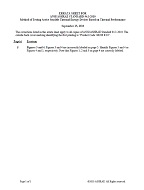Click here to purchase
Buildings in the U.S. consume about 40% of total energy consumption. A demand response (DR) control in the HVAC system can contribute to reducing the loads on the customer and utility sides by adjusting the setpoint temperature or pre-cooling the building. The effectiveness of such control systems to reduce the peak demand and energy use depends on the thermal response of buildings and how fast/slow the internal temperature changes/reacts to the HVAC activities. The thermal response is influenced by multiple factors such as occupancy, outdoor temperature, solar radiation, and building envelope thermal properties. A DR system does not achieve its maximum potential in terms of reducing the load, energy use, and energy-related costs if it takes too long until the interior temperature adjusts itself to the setpoint temperature or it might cause thermal discomfort if rapid changes in the temperature are experienced due to the heat loss through the building envelope. Therefore, it is important to study and quantify the impact of building envelope thermal properties on the effectiveness of DR systems. This paper studies the impact of different building envelope thermal resistance on the effectiveness of the DR control system. Five buildings with different overall wall R-value ranging from 10 to 35 (hr.°F.ft2)/BTU (RSI 1.76 to 6.16 (K⋅m2/W)) are modeled in the 4A/mixed-humid climate region using NREL’s BEopt software. Different DR scenarios based on temperature setback and pre-cooling are applied to these buildings and their effectiveness is evaluated by observing three factors including the rate of change in indoor temperature (oF/hour), annual energy savings (kBtu/ft2)(kWh/m2), and cost savings ratios. The results show that the HVAC control system could save about 4.2% and 3.6% on energy use in buildings with low and high wall R-value, respectively. For heating and cooling periods, the rate of change in indoor air temperature in buildings with low insulation is about 16% and 25% faster, respectively. These findings can help to adopt a proper energy retrofit system and leads to more accurate load prediction, which is an essential part of smart grids to manage the grid-side loads based on the DR system.
Citation: Thermal Buildings XIV 2019
Product Details
- Published:
- 2019
- Number of Pages:
- 10
- Units of Measure:
- Dual
- File Size:
- 1 file , 2.6 MB
- Product Code(s):
- D-Bldgs19-100


